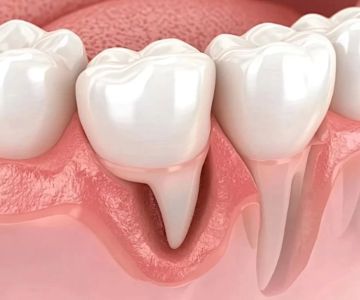How to Treat Gum Disease and Prevent Tooth Loss: Effective Tips and Prevention Methods
- 1. Understanding Gum Disease: What You Need to Know
- 2. Common Causes and Risk Factors of Gum Disease
- 3. How to Treat Gum Disease: Step-by-Step Guide
- 4. Preventing Tooth Loss: Proven Methods
- 5. Maintaining Long-Term Oral Health for Healthy Gums
- 6. Real-Life Case Study: How One Person Reversed Gum Disease
1. Understanding Gum Disease: What You Need to Know
Gum disease, also known as periodontal disease, is a common issue affecting many individuals worldwide. This condition begins with inflammation of the gums and, if untreated, can lead to tooth loss. It is important to understand the stages of gum disease, from gingivitis (early stage) to periodontitis (advanced stage), in order to address the issue before it worsens.
2. Common Causes and Risk Factors of Gum Disease
Several factors contribute to the development of gum disease. Poor oral hygiene is the primary cause, leading to plaque buildup that irritates the gums. Other risk factors include smoking, hormonal changes, certain medications, diabetes, and genetics. Identifying these risks can help you take preventive measures before gum disease sets in.
3. How to Treat Gum Disease: Step-by-Step Guide
Treating gum disease depends on its severity. For early stages like gingivitis, improving oral hygiene practices, such as brushing and flossing regularly, can significantly reverse the condition. For more advanced stages, professional treatment from a dentist or periodontist is necessary. Treatments may include scaling and root planing (deep cleaning), medications, or even surgery in severe cases.
4. Preventing Tooth Loss: Proven Methods
Preventing tooth loss due to gum disease is possible with proper care. Regular dental checkups are key to detecting gum disease early. Additionally, practicing good oral hygiene by brushing with fluoride toothpaste and flossing daily can help maintain healthy gums and teeth. Avoiding tobacco use and maintaining a healthy diet rich in vitamins and minerals also plays a crucial role in preventing tooth loss.
5. Maintaining Long-Term Oral Health for Healthy Gums
Long-term oral health is essential for preventing gum disease and tooth loss. Regular dental cleanings, combined with daily brushing and flossing, will help keep your gums healthy. Consider using an antimicrobial mouthwash to reduce plaque buildup and further protect your gums. A well-balanced diet with nutrients like vitamin C, calcium, and omega-3 fatty acids can also improve gum health.
6. Real-Life Case Study: How One Person Reversed Gum Disease
Let’s take the case of Sarah, a 35-year-old woman who had been experiencing bleeding gums and sensitivity. After visiting her dentist, she was diagnosed with early-stage gum disease. By following a strict oral care routine that included professional cleanings and lifestyle changes, such as quitting smoking and improving her diet, Sarah was able to reverse the condition. Her story is a testament to how early intervention and consistent care can prevent serious dental issues like tooth loss.
If you are experiencing any of the symptoms of gum disease or want to ensure that your oral health remains in top shape, don't hesitate to consult with a dental professional. Taking action early can save your teeth and gums. For more tips on maintaining oral health or to explore the best oral care products, click here to learn more!







 Westgate Dental Arts
Westgate Dental Arts Coventry Family Dental
Coventry Family Dental Familia Dental
Familia Dental Dr. Daniel S. Fife, DDS
Dr. Daniel S. Fife, DDS Dentistry At Suburban Square: Michael I. Wollock, DMD
Dentistry At Suburban Square: Michael I. Wollock, DMD Comfort Care Dental
Comfort Care Dental The Importance of Oral Health Education During Pregnancy for a Healthy Pregnancy
The Importance of Oral Health Education During Pregnancy for a Healthy Pregnancy Why Skipping Dental Checkups Can Lead to Bigger Oral Health Problems
Why Skipping Dental Checkups Can Lead to Bigger Oral Health Problems Advantages of Porcelain Dental Restorations
Advantages of Porcelain Dental Restorations Best Tips for Brushing Your Teeth Properly for Healthy Gums: Essential Techniques for Oral Health
Best Tips for Brushing Your Teeth Properly for Healthy Gums: Essential Techniques for Oral Health How Can Diabetes Cause Tooth and Gum Problems? Preventing and Managing Oral Health Issues
How Can Diabetes Cause Tooth and Gum Problems? Preventing and Managing Oral Health Issues Healthy Habits for Promoting Good Oral Health and Hygiene: Tips for a Healthy Smile
Healthy Habits for Promoting Good Oral Health and Hygiene: Tips for a Healthy Smile